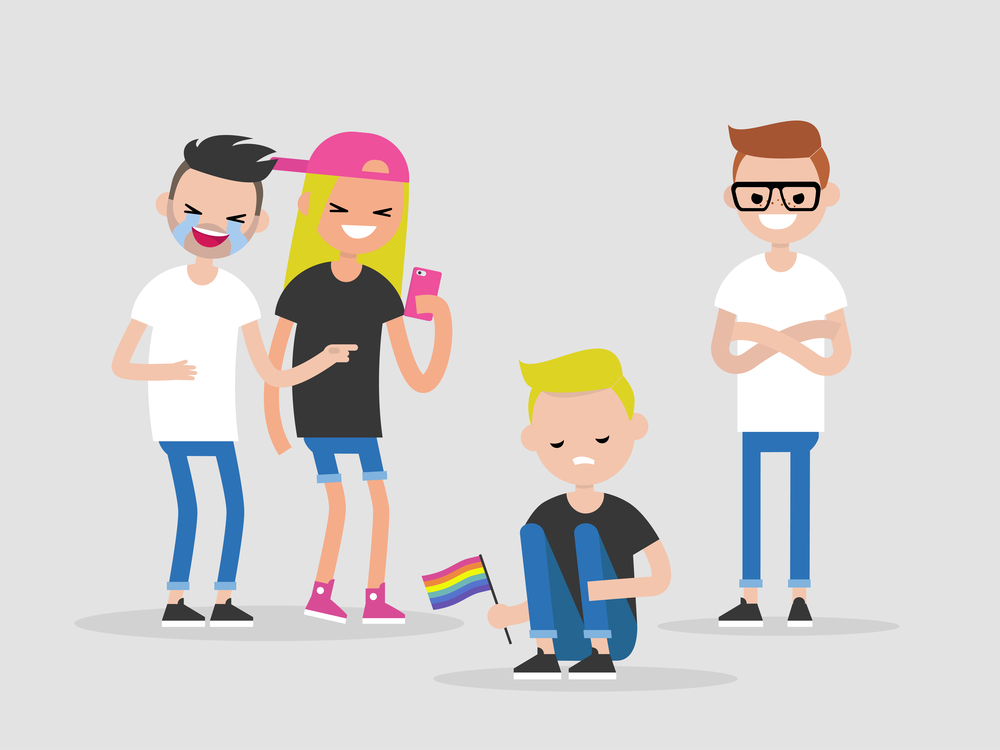October is the National Bullying Prevention Month. Research demonstrates that bullying can compromise mental health. As a result, the United Nations has called for policies to address bullying as part of a rights-based approach to mental health.
A recent article published in the JAMA Pediatrics explores whether anti-discrimination litigation is related to sexual orientation-based harassment and discrimination in schools. The study found that litigation that protects and promotes LGBT+ rights may reduce rates of homophobic bullying in schools.
The study was led by Dr. Mark L. Hatzenbuehler, a professor from the department of psychology at Harvard University. Hatzenbuehler and his coauthors write:
“Homophobic bullying – a subtype of bias-based bullying – has been linked to significantly worse psychosocial and academic outcomes. While there is emerging evidence that litigation can change the public attitude toward stigmatized groups, the extent to which litigation affects stigmatizing behaviors remains largely untested.”
 Research suggests both bullies and victims of bullying experience increased risk for symptoms associated with psychiatric disorders. Sexual minority youths are especially vulnerable to bias-based bullying, which leads to more psychological distress and an increased suicide rate. Nevertheless, school-based bullying prevention programs often overlook homophobic bullying.
Research suggests both bullies and victims of bullying experience increased risk for symptoms associated with psychiatric disorders. Sexual minority youths are especially vulnerable to bias-based bullying, which leads to more psychological distress and an increased suicide rate. Nevertheless, school-based bullying prevention programs often overlook homophobic bullying.
“Because existing approaches either lack empirical evidence or encounter significant obstacles, we focus on litigation as an alternative strategy for reducing homophobic bullying,” the researchers write. “We examined whether litigation was associated with reductions in homophobic bullying measured within the same school during the case and after it was resolved.”
Due to the lack of existing data, this study designed a unique method to combine information on the outcomes of multiple court cases with individual-level data on stigmatizing behaviors in a real-world setting. The study coded effects of litigation addressing alleged violations of the rights of students who are (or are perceived to be) lesbian, gay, bisexual, or transgender (LGBT) under laws prohibiting harassment or discrimination in California schools after 2000 and linked the outcomes to survey data on homophonic bullying from over 1.5 million youth across 499 schools in California.
They identified 31 unique court cases and coded students as being enrolled into three different types of schools: the case schools (the schools that were the subject of litigation), the spillover schools (a school in the district that was the subject of litigation but not the school itself), and the control schools (a school that was neither the subject of litigation nor in the same district as the case schools).
The study first controlled for all student demographic information (e.g., age, sex, race, and ethnicity), schools’ total enrollment, and the presence of Gender and Sexualities Alliances (GSA), the analysis compared before-and-after changes in the probability of homophobic bullying among students in schools subject to litigation with control schools.
The results showed a noticeable reduction in rates of homophobic bullying in case schools, although the finding was not statistically significant.
“Compared with the years before the case, students in case schools vs. control schools evidenced a nonsignificant 5% reduction in the ratio of the odds ratios (ROR) of homophobic bullying in the years during the case but a 16% reduction after the case resolution,” the authors explain. “For students in case schools vs. control schools where the plaintiff (student) secured monetary and injunctive relief, there was a nonsignificant 4% reduction in the ROR of homophobic bullying in the years during the case but a 23% reduction in the ROR of homophobic bullying after the case was resolved.”
They also found that the type and outcome of the litigation led to different results in case schools:
“In districts where the plaintiff secured monetary and/injunctive relief, students in spillover schools experienced a 24% reduction in the ROR of homophobic bullying the years after the case resolution.”
“For students in case schools vs. control schools where the defendant (school or district) avoided adverse legal consequences, there was a nonsignificant 10% reduction in the odds ratios of homophobic bullying in the years during the case; however, this association was reversed in the years after the case resolution, where students experienced a nonsignificant 27% increase in the odds ratios of homophobic bullying.”
Recognizing homophobic bullying as a public health concern, the study revealed that antidiscrimination litigation could be a strategy to address the bias-based bullying of LGBT youth. The study also encouraged future research to examine any specific aspects of litigation most strongly associated with changes in the outcome to propose effective ways to combat inequalities experienced by LGBT youth.
The authors conclude:
“With the effect sizes comparable with that of resource-intensive school-based bullying interventions, litigation seeking to address alleged violations of the rights of students who are (or perceived to be) lesbian, gay, bisexual, or transgender under laws prohibiting harassment or discrimination may lead to reductions in rates of homophobic bullying… Homophobic bullying slightly increased in the school and district where the defendant (school) avoided adverse legal consequences.”
****
Hatzenbuehler, M. L., McKetta, S., Kim, R., Leung, S., Prins, S. J., & Russell, S. T. (2022). Evaluating litigation as a structural strategy for addressing bias-based bullying among youth. JAMA pediatrics, 176(1), 52-58. (Link)








